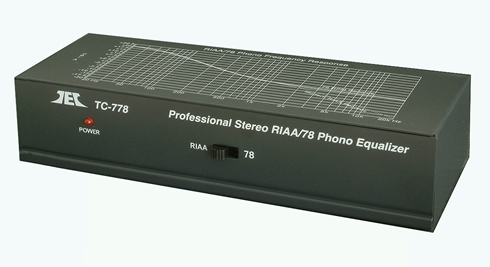sKiZo
Hates received: 92644 43.20°N 85.50°W
Quite a few cheap USB turntables listed that do just that, but wondering which to buy. I'm looking to convert a couple hundred old disks that have been collecting dust but don't see any reason to burn the bank doing it.
- Table recommendations? Remember the "budget" part, please.
- Software? I hear good things about EQUALIZER freeware, but can't find it.
- Stylus concerns? Most of the three speed tables I see (Ion anyone?) either don't list their stylus specs, or just say that the tables will work at 78rpm ... just now how well. The disks DO need a wider needle for the best results. That said, will single playback suffer using the standard stylus supplied?
Another option - playback on a "standard" table at 45rpm and convert the speed using Audacity. I understand there's EQ issues involved, but also find that there's apparently ways around that. Found this interesting lil beastie in my wanderings ...

Not much about it, other than it allows you to switch between standard RIAA or a "78" curve. Granted, there's a LOT of 78rpm curves, but this is supposed to provide acceptable playback with most if not all. What it DOES apparently avoid is the major top end roll off that applying RIAA would do for the older recordings.
(This box also allows TWO table connections, one for your LPs and the other for a dedicated 78 table, accessible with a flip of a switch. That's kewl, but I'd be switching cartridges on my Mitsu to do the ripping. Got a decent little NOS old school Shure with a 3mil stylus for that.)
And worth noting ... not really looking for "audiophile grade" rips ... one shot deal, adequate or better, just to preserve them for my digital collection, then back in the closet with em.
Thoughts? Suggestions?
- Table recommendations? Remember the "budget" part, please.
- Software? I hear good things about EQUALIZER freeware, but can't find it.
- Stylus concerns? Most of the three speed tables I see (Ion anyone?) either don't list their stylus specs, or just say that the tables will work at 78rpm ... just now how well. The disks DO need a wider needle for the best results. That said, will single playback suffer using the standard stylus supplied?
Another option - playback on a "standard" table at 45rpm and convert the speed using Audacity. I understand there's EQ issues involved, but also find that there's apparently ways around that. Found this interesting lil beastie in my wanderings ...

Not much about it, other than it allows you to switch between standard RIAA or a "78" curve. Granted, there's a LOT of 78rpm curves, but this is supposed to provide acceptable playback with most if not all. What it DOES apparently avoid is the major top end roll off that applying RIAA would do for the older recordings.
(This box also allows TWO table connections, one for your LPs and the other for a dedicated 78 table, accessible with a flip of a switch. That's kewl, but I'd be switching cartridges on my Mitsu to do the ripping. Got a decent little NOS old school Shure with a 3mil stylus for that.)
And worth noting ... not really looking for "audiophile grade" rips ... one shot deal, adequate or better, just to preserve them for my digital collection, then back in the closet with em.
Thoughts? Suggestions?


